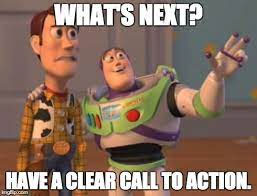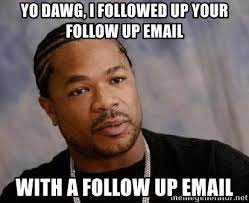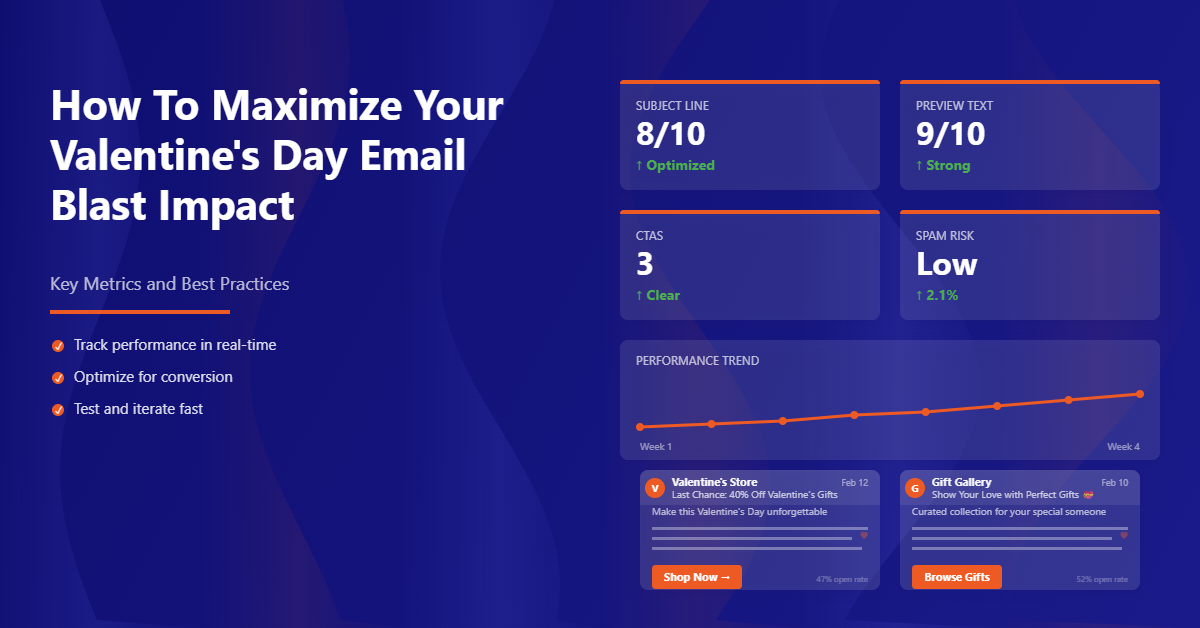If you knew better, you’d do better. Yet, most of us have to learn the hard way — we have to fail once or twice before getting it right.
The mistake I speak of is email follow-ups and, more specifically, irritating people with these emails.
Let me start by saying that this post isn’t a complete guide on email follow-ups. This post is just a short checklist of things to consider when crafting new email follow-ups or reviewing existing ones.
7 Powerful Persuasion Tips To Use In Your Next Email Follow-ups
Persuasion is as much an art as it is a science, and it’s something we could all stand to master. But some crucial tips make all the difference.
When used correctly, these powerful persuasion tactics will help you win over your audience, captivate their attention and get them to take the action you want.
Here are seven of my favorite persuasion tactics for email follow-ups:
1. Make Your Email Subject Line Intriguing, But Not Sketchy.
You need a good subject line, but it’s also essential that this line doesn’t end up in their spam folder. Be compelling, but don’t be misleading or too ‘clickbaity.’
A great trick for making a subject line intriguing is to provide a small piece of information that will make people emotionally invested in reading more.
It should be an intriguing summary of what you’re sending, and it should also be short enough that it doesn’t get cut off in the inbox. You want to get these things right because most emails won’t even make it past this stage if you don’t.
For example, if you’re sharing a case study, you could say, “How X helped Y increase their conversion rate by 50% in less than 30 days.”
It makes people wonder how they did it and entices them to open the email.
Subject lines like this are OKAY, but what you don’t want to do is promise something that your email doesn’t deliver.
For instance, you shouldn’t say, “How we made $10,000 in 8 weeks using Instagram” if your email only talks about how someone else did it.
2. Be Personal
When you send an email that’s not just a form letter but it is to target the person receiving it specifically, they will respond in kind.
They’ll feel like you’re talking directly to them and not just blasting a message out to the world. And more likely to open your emails in the future and respond positively to your Call-To-Action (CTAs).
When writing an email, keep these tips in mind:
- Keep it short. The best emails are short and sweet, not long and wordy. Attention spans are short; get right to the point so you can make your case as quickly as possible.
- Write like a human being. Talking directly to your customers makes them feel connected — so speak like one person talking to another. Avoid corporate jargon or buzzwords that may alienate readers who don’t share your knowledge of industry terms.
3. Reference Your Previous Communication
One of the most common mistakes I see people make when sending an email follow-up is that they don’t reference their prior communication.
For example:
“Hi, it’s [name], your real estate agent. I wanted to follow up to see if you have any questions about the listing we discussed.”
It’s easy to get confused if you don’t know which property they’re talking about. Was it the condo with the view of the ocean? Or was it the red brick house on a cul-de-sac? Maybe it was remodeled and had a new kitchen.
If you have to think about this for more than a second or two, you may forget what you were talking about in the first place and move on.
On the other hand, it’s much easier to remember why you’re emailing them again if you reference your prior communication. It focuses on what matters most—you, your business, and why they should work with you over anyone else.
I recommend starting your email off by saying, “I was thinking about our conversation yesterday about 123 Main St….”
The key here is to be as straightforward as possible, with no confusion.
4. Use Social Proof To Demonstrate That Others Have Found Value In What You Have To Offer.
Social proof is one of the most powerful influencers in marketing and sales today. It refers to the idea that we are more likely to trust something if other people trust it.
It’s a psychological principle called the “bandwagon effect” (when people do something because others are doing it).
So when you are writing your follow-up emails, be sure to include examples of other people who found success working with you or using your products and services.
You can use social proof in your emails in a variety of ways. For example:
- Show them customer testimonials: Share what other people say about you and your products or services.
- Share screenshots of sales data: If you’ve sold many copies of something or already helped many clients, this will help give credibility to your offer.
- Use case studies: Share stories of people who have used what you’re offering and how it has helped them solve their problems. It will help make the benefits seem more accurate for your prospects.
Your goal with social proof is to show that others have found value in your product or service so that your prospects will think they’re not alone in their current situation and they can get similar results.
5. Make It Clear How They Can Reach Out To You.
You’ve given them all the reasons why they should call you. Tell them how to do it. Make your contact information prominent and easy to find. If you can include a call to action, do it! No one is going to reach you if they don’t know how.
A good practice is to have a link or button that says “Contact Me” or “Call Me” and go directly to your business phone number. Often, the device’s operating system will automatically start dialing the number right after they tap on it.
If you don’t want people calling you directly from your email, then at least make it easy for them to get in touch with you through your website.
You can give them a link that takes them directly to your contact page (or whatever page on your site has your contact info) so that they can send an email or fill out a form instead of making a phone call.
You want your readers to be able to contact you quickly, so make sure to include that information in your follow-up emails.
6. Provide A Strong Call-To-Action (CTA).
If you want people to do something, tell them to do it. Your persuasion tips will be useless if your call to action isn’t straightforward and convincing. And remember: a strong CTA is not an aggressive one; it’s about making the next step evident so that everything is easy for the reader.
Don’t be afraid to ask for the sale, but do it in a way that doesn’t make the reader feel pressured or uncomfortable. Be confident, transparent, and friendly—all there is to it.
Additionally, it should be the main focus of your email. The recipient shouldn’t have to search for your CTA—it should be right in their face.
For example, when sending a follow-up email to someone who downloaded your e-book, your CTA might be “Click here to read my e-book!” Instead of blending your CTA into the rest of your body text or tucking it away at the bottom of the email, make it stand out with bold text and a hyperlink.
7. Don’t Be Afraid To Send More Than One Follow-up Email.
It’s better to underdo it than overdo it when sending follow-up emails. The average person receives about 120 emails a day.
When you send one message, you’re fighting for a sliver of someone’s time and focus. You have to be willing to send multiple email follow-ups if you want your message to stand out.
Some sources say you should send five emails, while others say 3 is the magic number. But there’s no hard and fast rule here: it all depends on what you’re trying to accomplish.
If you’re looking for a reply, then maybe two email follow-ups will do it—but if you’re trying to book a meeting or get someone to sign up for your service, then definitely take the time to send more than one email.
The more your prospect sees your name and your message, the more likely they are to take action and respond.
So, don’t be afraid to send more than one follow-up email. Continually following up until your prospect responds is a great way to build persistence that can be useful in business (and life).
Let’s Wrap Things Up!
There’s a lot to the art of email follow-ups and making your messages easier to read and more likely to get a response.
These seven tips are designed to help you do just that, so keep these points in mind when you want to follow up with a contact over email. Who knows, you might find yourself getting responses faster than ever before.











